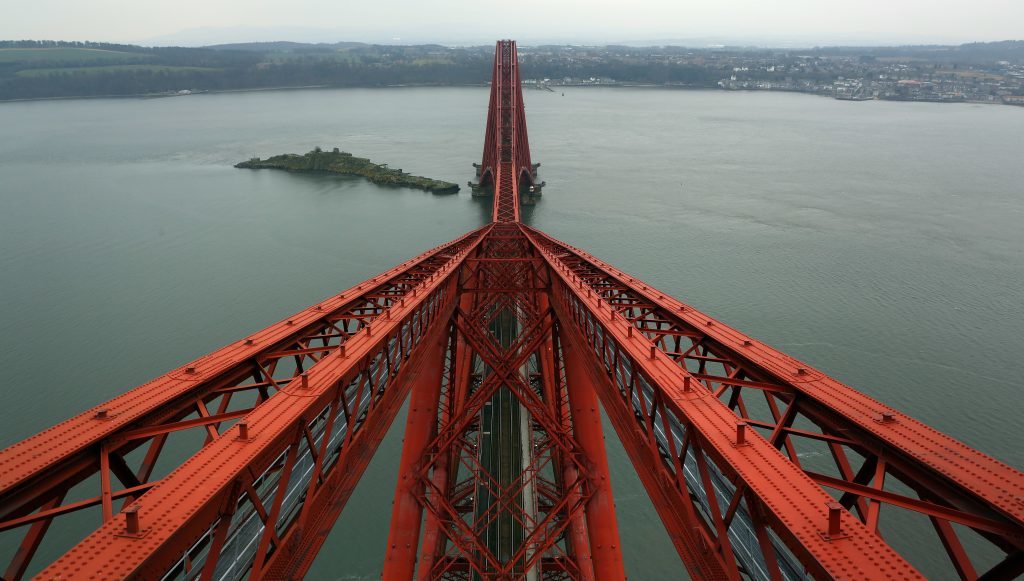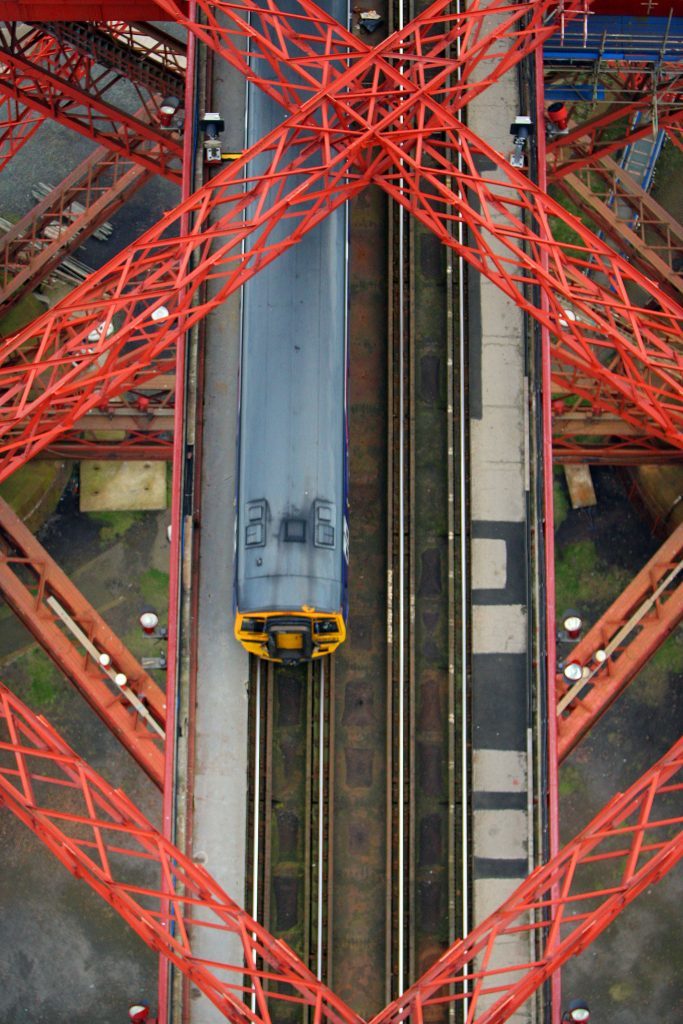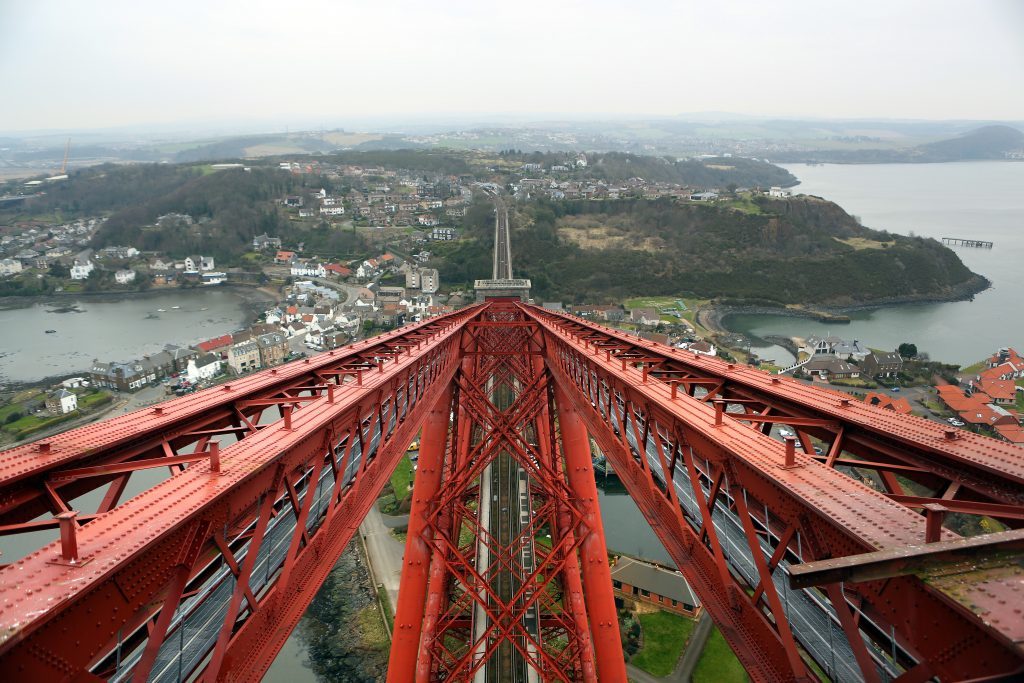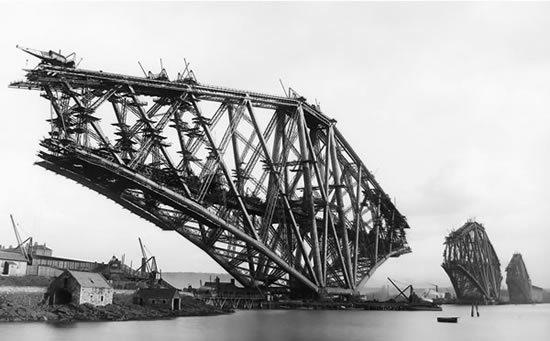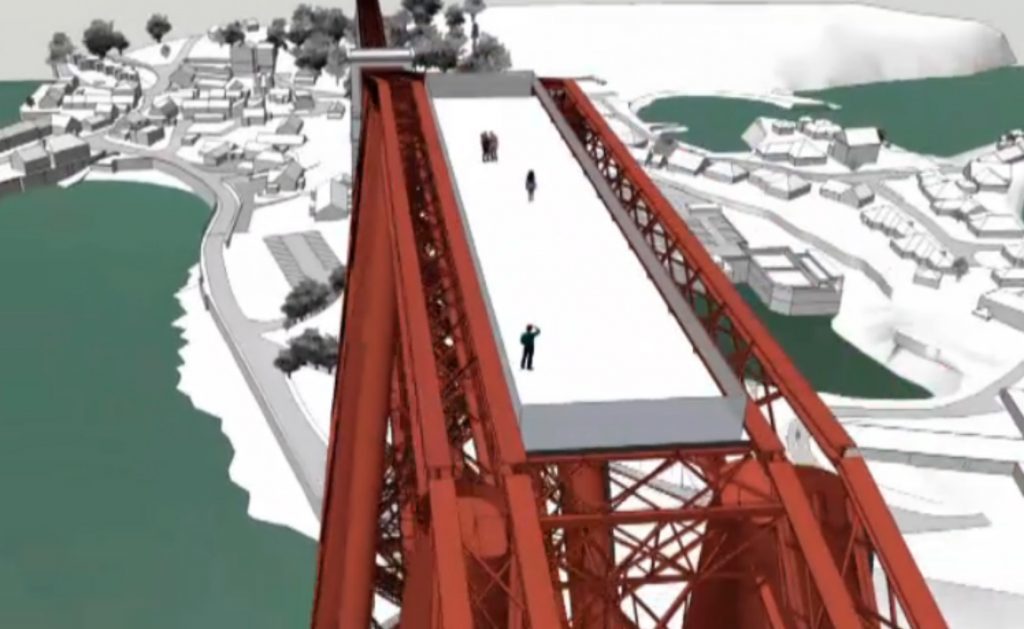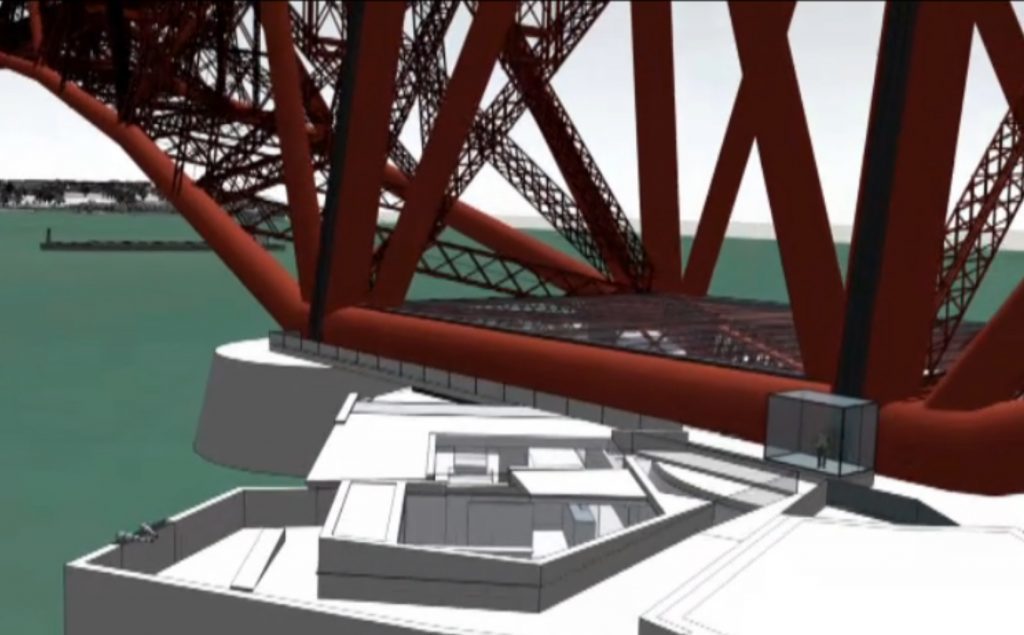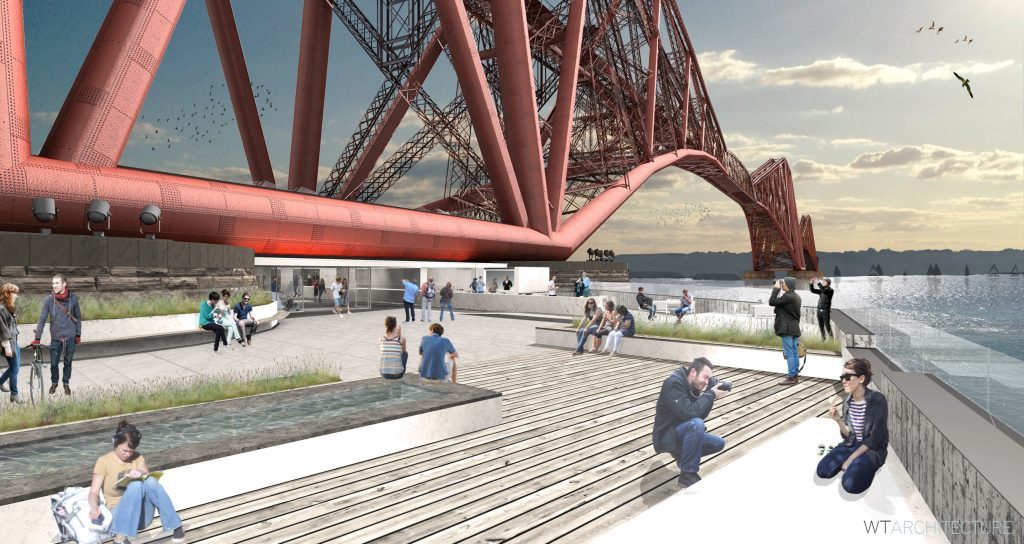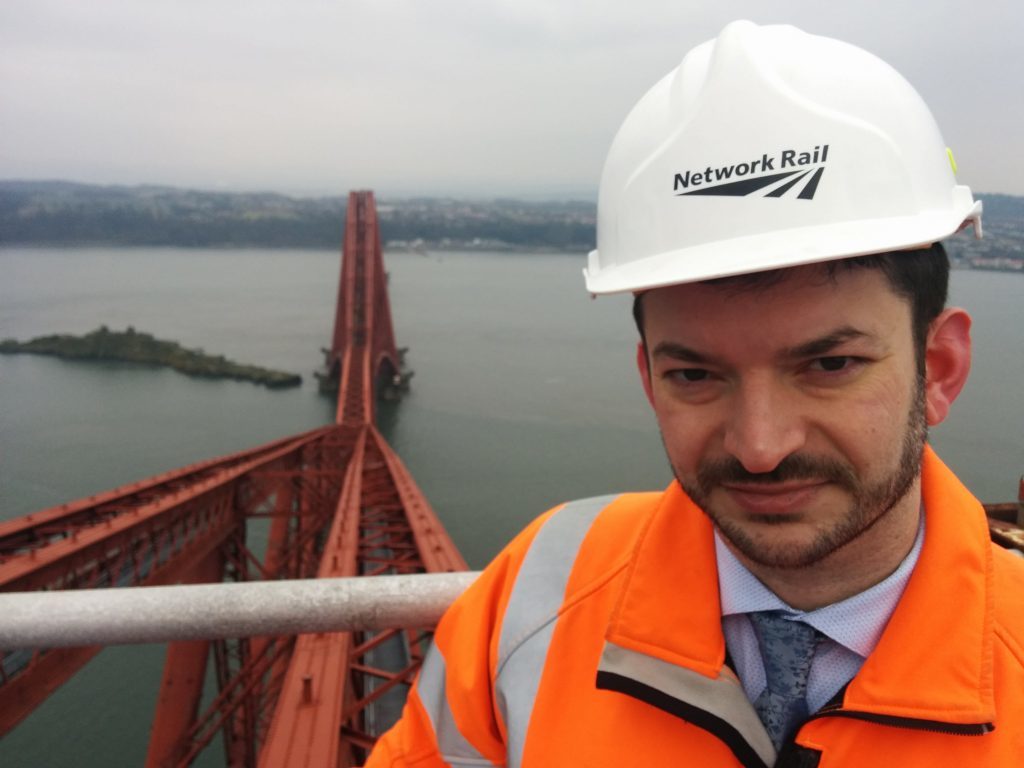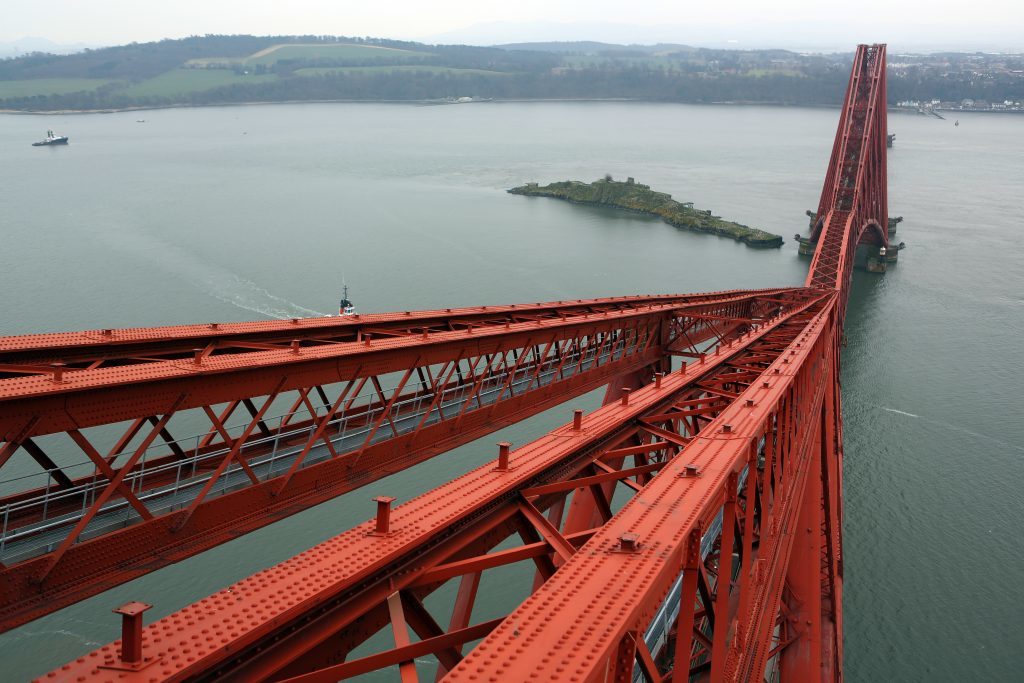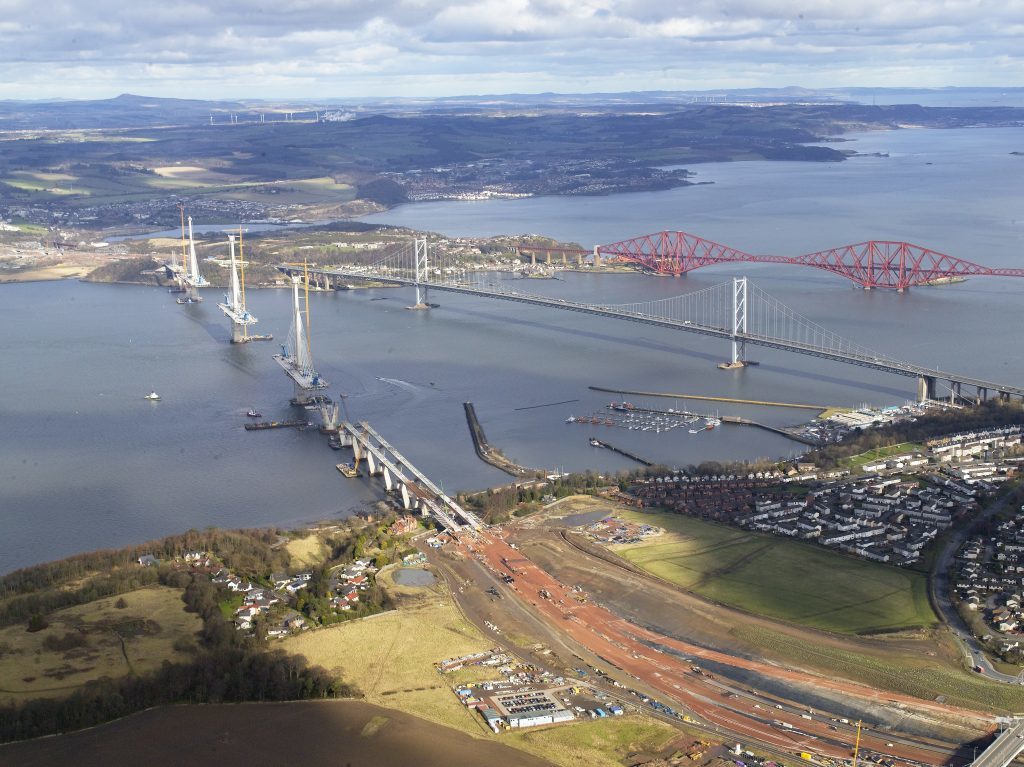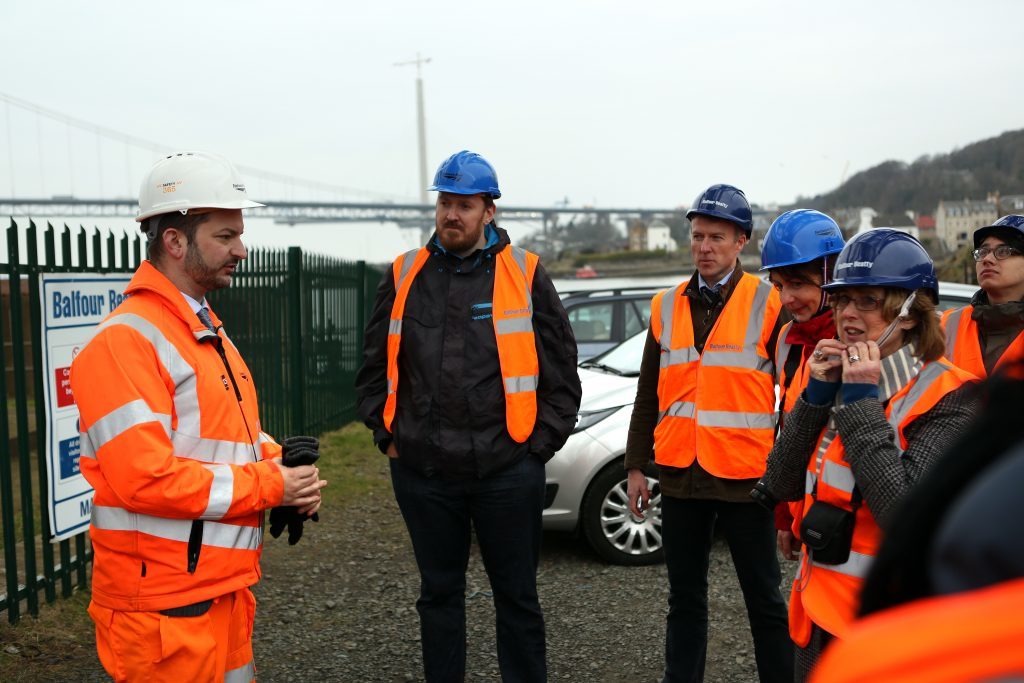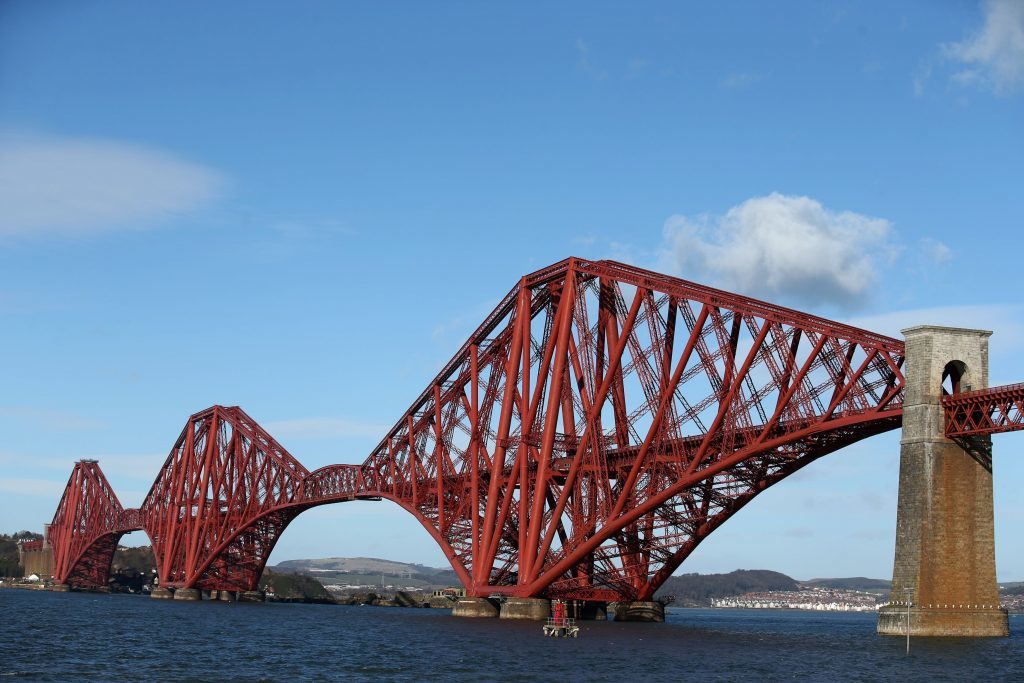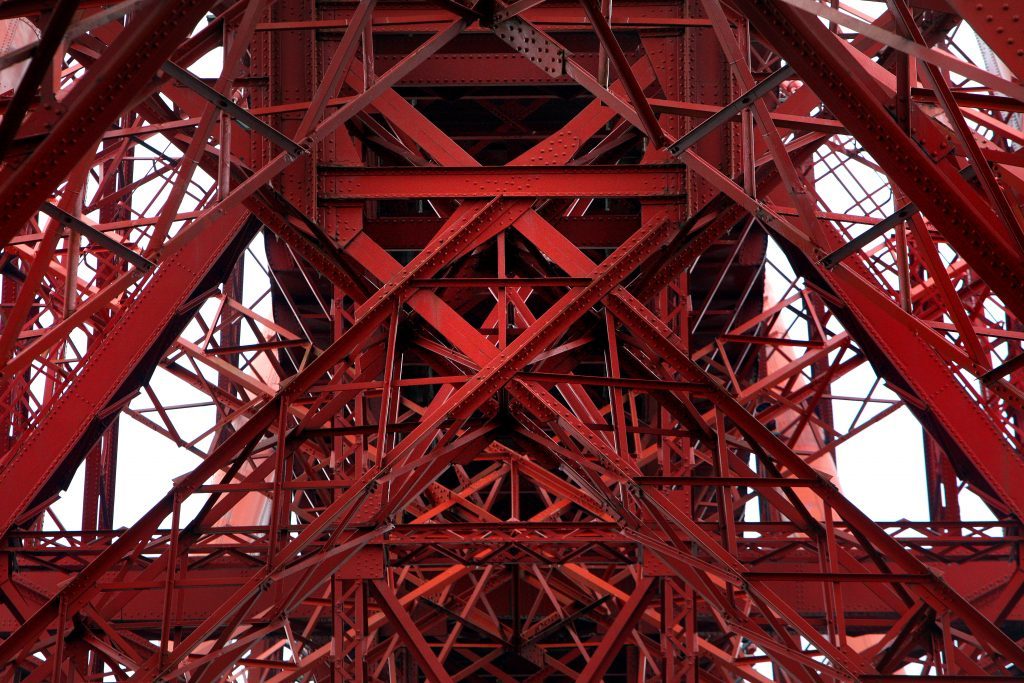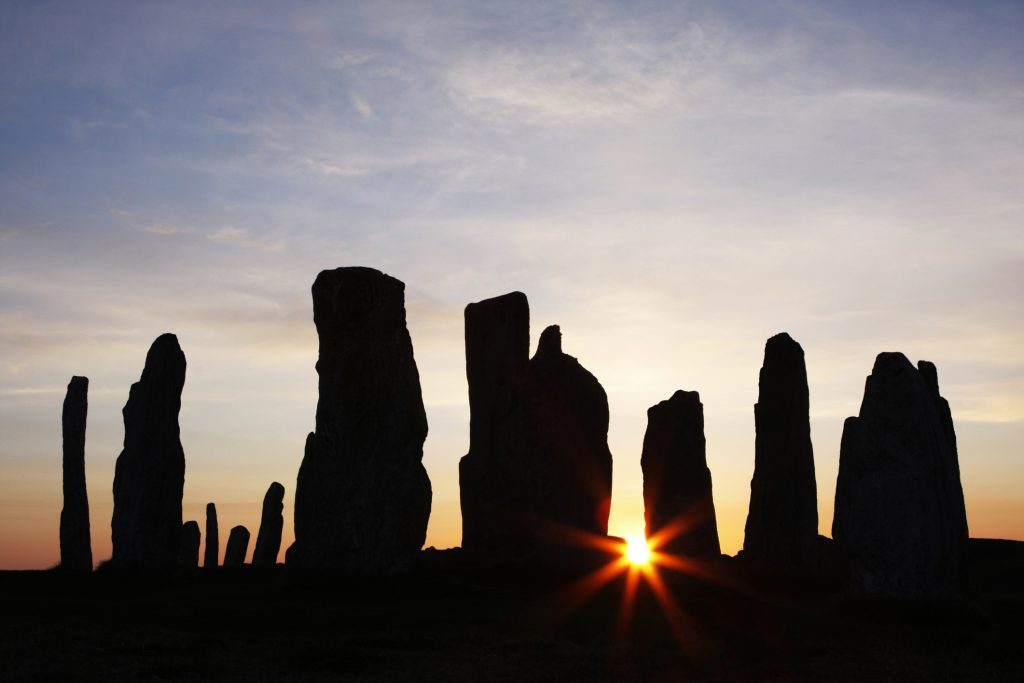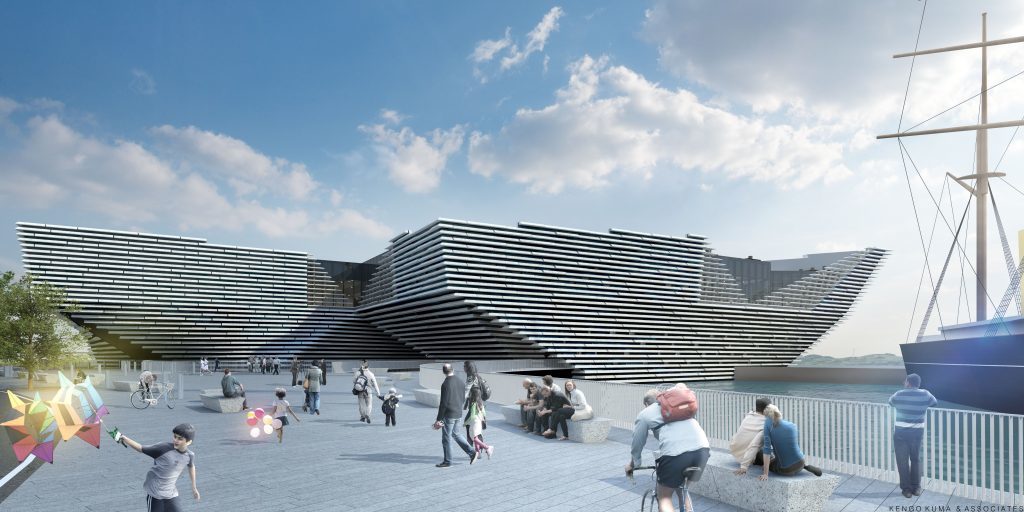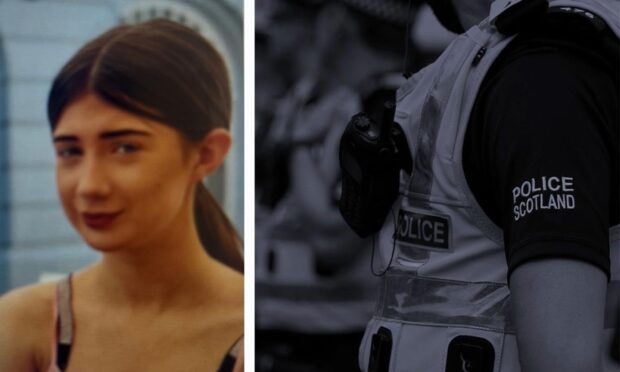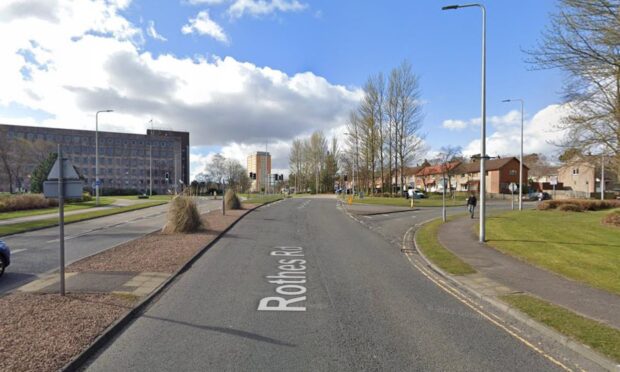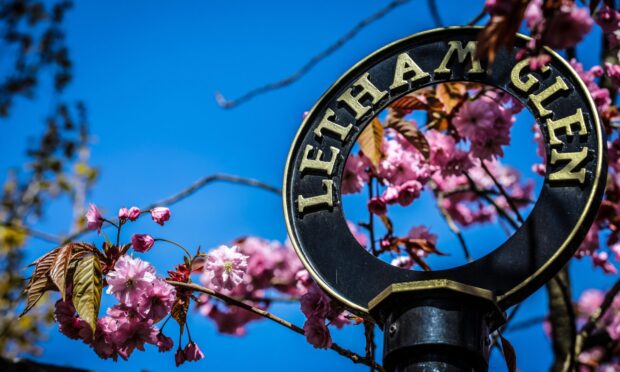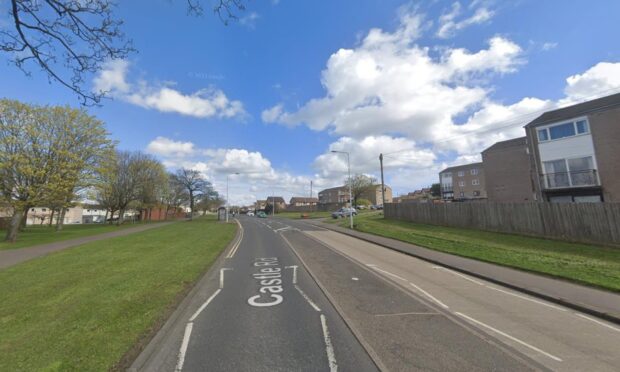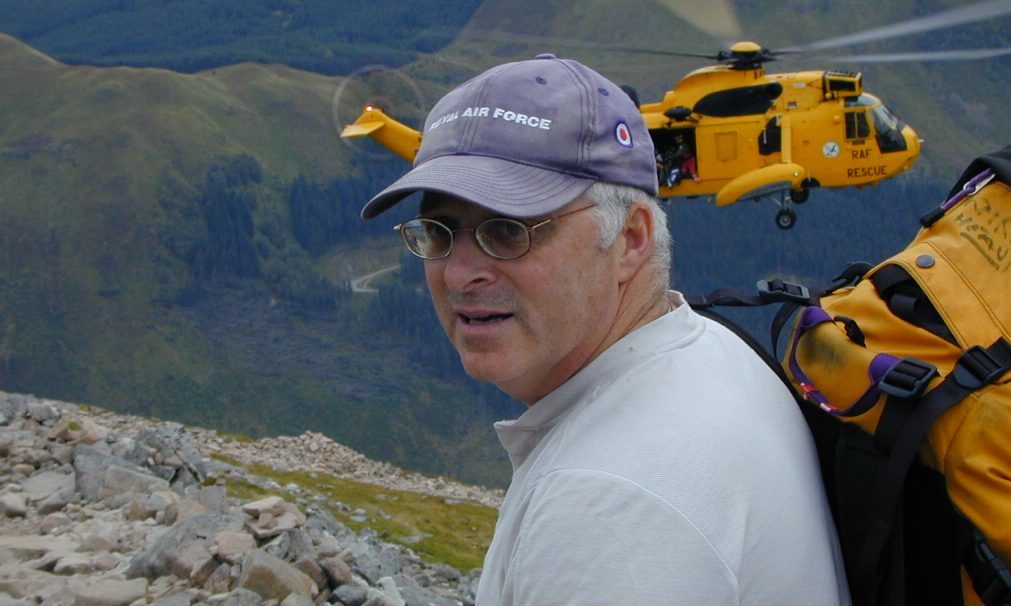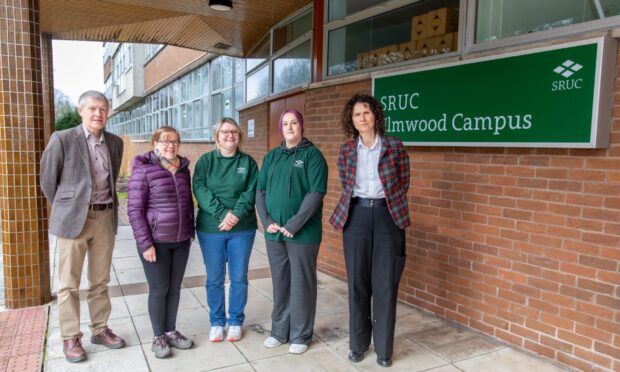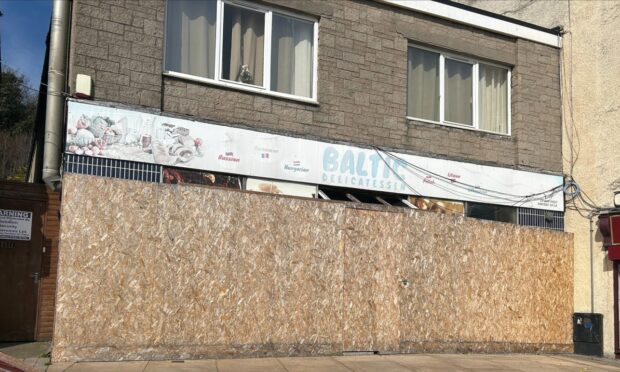Michael Alexander scaled the iconic Forth Bridge to find out how ambitious £30 million plans for a visitors centre and bridge climbing experience are being showcased as part of VisitScotland’s Year of Innovation, Architecture and Design 2016.
Clambering into the metal cage at the foot of the Forth Bridge’s north cantilever, the railway engineer pulls the gate shut and fastens it securely.
“Are you ready?” he smiles, trying to make himself heard above the rumble of an Edinburgh-bound train passing high above us.
Without further ado, he presses a button and the lift, normally used by maintenance workers to service the iconic structure, shudders into life, slowly carrying us 110 metres up the outside of the bridge leg, beyond track level, and up to the very top of the famous cantilever closest to the Fife side.
The views as we ascend are staggering – the fresh breeze whistling through the cage mesh slightly disconcerting.
But this is just a taste of what we are to experience as we rattle to a halt and step out onto a specially build platform on the very roof of the bridge.
From the giddy heights looking down to the trains crossing the bridge far below us, to the magnificent views of the Forth Road Bridge and the Queensferry Crossing under construction beyond it.
From the sight of cargo ships carving their way through the choppy waters as they head for Rosyth, to the perspective of seeing the bridge’s famous red steelwork up close from above, this is an experience that money can’t buy.
Not many people can say they’ve climbed to the top of the Forth Bridge.
But if bridge owners Network Rail get their way, and funding issues can be resolved, an estimated 260,000 visitors per year will have the opportunity to do just that as part of a proposed £30 million visitor centre experience.
The iconic bridge, which opened in March 1890 and remains one of the most recognisable structures in the world, was inscribed as a World Heritage Site by United Nations body UNESCO in July last year.
Now, the rail company has a vision of opening up this magnificent structure and symbol of Scotland to the public for the first time.
And whilst research is on-going, an initial feasibility study has identified the possibility of a Sydney Harbour Bridge-style bridge walk from South Queensferry and a combined visitor centre and viewpoint atop the Fife cantilever.
“Basically we’re still at the design phase with Scottish Government approval likely to be required,“ says Network Rail senior communications manager Craig Bowman.
“But we believe we can create an affordable experience for family groups through the visitors centre and thrill seekers walking the bridge. Profits will be reinvested in the bridge’s primary purpose – to keep trains running across the Forth. These funds will help to keep the bridge in shape, preserving it for generations to come.”
The proposals include an exhibition space on the Fife side. There would be an interpretation about how the bridge was built and why. There would then be an option to access the roof of the bridge via a hoist.
At the south tower, Network Rail is looking at a much more adventurous kind of proposal. It would be a bridge walk much like Sydney Harbour Bridge. It would be a place to get roped up, get your kit on, be given a safety briefing and then be walked out along the approach span.
Mr Bowman said the number of visitors on the Fife side was constrained in so far as the bridge juts out from a peninsula in the middle of North Queensferry. It’s likely some kind of park and ride facility would therefore have to be created outside of North Queensferry to bus visitors in, possibly using electric vehicles and short wheel-based buses.
But he recognised there had been “understandable anxiety” amongst some residents of North Queensferry about the potential influx of visitor numbers. A protest group was set up last year expressing opposition from some neighbours.
“We’ve had a huge, generally very positive response, “he adds. “But you can understand there are some concerns about how it’s managed locally. There’s still a bit of work to be done there to agree a final solution on that.
“But from our point of view it’s about trains as well. It’s a railway attraction. The idea is that you’ll be able to buy a ticket to come to the visitor centre, and included within that will be your return rail ticket, from Edinburgh or equivalent.
“That way it incentivises the use of rail, and it dis-incentivises using the car.”
If and when permissions are granted, Mr Bowman said it’s likely the south-side development would start first.
“There’s still a good couple of hurdles to cross, but we’ve got a really good design, we’ve got a really good business case. And we’re hoping we can get that final kind of nod from the powers that be to get the money in place by the end of the year.
“The estimated costs are between £25 million and £30 million. But the fact is the main attraction is already there! At least we’re not having to build that!”
With UNESCO World Heritage status announced for the rail bridge last year and the Queensferry Crossing due to open before the end of the year, Mr Bowman said the attraction would be unique in terms of there being bridges from the 19th, 20th and 21st centuries all sitting side by side.
The UNESCO award meant the bridge became Scotland’s sixth World Heritage Site and it now enjoys the same status as the Taj Mahal and the Great Wall of China.
And already this has been attracting the attention of members of the international press, including journalists from France, Germany, Ireland, Canada and the USA, who joined The Courier during the special trip to the top of the bridge.
Their trip to Scotland, designed to draw more tourists into Scotland, was organised by VisitScotland and aimed to showcase Scotland’s Year of Innovation, Architecture and Design (YIAD 2016) – the bridge being an iconic member of that group.
YIAD 2016, which launched on January 1, is Scotland’s new focus year following on from the Year of Food and Drink 2015. It celebrates the richness of Scotland’s built heritage, culture and environment, alongside the contemporary and cutting edge designs of today.
A Visit Scotland spokesperson said: “From textiles and technology, to architecture, fashion and design, the year-long programme shines the spotlight on Scotland’s greatest assets and icons, as well as some of our unique hidden gems. The year presents an opportunity for visitors to discover Scotland’s achievements in innovation, architecture and design through a wide variety of events.”
Highlights so far include the official launch of the Festival of Architecture, curated by the Royal Incorporation of Architects in Scotland. This took place at Scotland’s most iconic modernist building, St Peter’s Seminary in Cardross. A night-time public art event was held exactly 50 years since the building was first opened. Audiences walked through the atmospheric, semi-ancient woodland to discover the ruined seminary buildings, subtly re-animated with monochromatic light installations and a specially commissioned choral work by composer Rory Boyle and performed by St Salvator’s Chapel Choir from St Andrews University.
The international press delegation was also given a tour of Glasgow city centre, which is famously laid out in a North American style grid-iron pattern. From Victorian influences to Charles Rennie Mackintosh’s innovative designs and the output of his contemporaries working in the Glasgow Style of Art Nouveau, they explored architectural styles spanning the centuries.
From there, they stepped back in time with a visit to the Callanish standing stones on the Isle of Harris – an archaeological site of international significance – with time also available to visit the Shawbost Harris Tweed mills and the new Harris whisky distillery in Tarbert. Dubbed The Social Distillery, it is the first commercial distillery to be built on Harris and is only the second distillery in the Outer Hebrides. Touted as having the potential to open up an entirely new whisky region for Scotland, the distillery has been founded by musicologist Anderson Bakewell.
Architectural splendour was also showcased in the form of a visit to the Eilean Glas Lighthouse, built by famous lighthouse engineer Robert Stevenson.
Old town
Returning to the mainland, the group also toured Edinburgh’s Old and New Town. The juxtaposition of medieval architecture with neoclassical terraces gives Edinburgh its own unique character.
With hundreds of events taking place across the country throughout the year, a key aim of the 2016 festival is to bring Scots and visitors together. From the Ideal Hut Show touring Scotland from May to September, to the Out of Their Heads exhibition at the Scottish National Portrait Gallery in Edinburgh from June 11, there’s something for everyone.
Cakefest Scotland at Stirling Castle on September 11 will see 100 teams of budding architects oversee the creation of a spectacular 100 square metre , three-dimensional fully edible map of Scotland featuring 100 of the nation’s greatest buildings, modelled out of Scottish edible materials.
But it’s Dundee that will have the honour of drawing the Festival of Architecture to a close on November 18 and 19. A full programme has yet to be announced, but the Light Nights’ event promises to capitalise on Dundee city centre’s setting within the spectacular amphitheatre of the Tay, the site of Dundee’s ambitious waterfront regeneration.
In 2014, Dundee became the first UNESCO City of Design in the UK, a prestigious award that recognises the huge contribution the city has made to design worldwide, including medical research, comics and video games.
Showcasing Dundee
The designation, which had previously been awarded to just 12 cities including Beijing, Berlin and Montréal, is awarded after a city meets tough criteria set by the United Nations organisation. These include having an established design industry or industries, a cultural landscape fuelled by design and the built environment, design schools and design research centres, practising groups of creators and designers, and design-driven creative industries.
From ship building to jute, jam, and journalism, Dundee has been no stranger to innovation, architecture and design through history. How apt then that the city should draw the architecture festival to a close.
malexander@thecourier.co.uk
